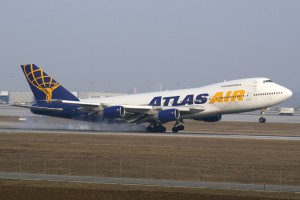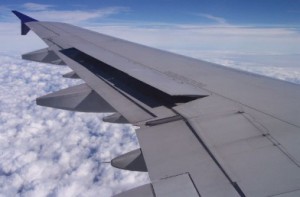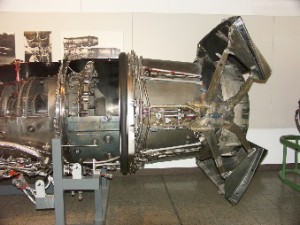Modern aviation is one of the most important and possibly, also the safest when it comes to transportation and travel. As a result of the increasing need for fast and reliable transfer of resources, airplanes have become increasingly complex and nowadays only a relatively small number of people know how they are operated.
In this Question of the Week, we want to focus on one particular detail of aviation: The landing. A typical airplane approaches the airstrip with a speed of around 270 km/h and has to decelerate within a very short time to guarantee a safe landing. So how do you brake an airplane?
To answer this question, we first have to think about how braking works in the case of any wheel-based vehicle. In a nutshell, the braking process always exerts a torque upon the wheels which then use friction with the ground to lose kinetic energy. Friction, however, is massively dependent on the weight that rests on the wheels. In case of landing an airplane, the aerodynamic lift basically nullifies the weight of the plane and therefore makes braking while using the wheels extremely inefficient. As a result, the plane needs other ways to slow down until the aerodynamic lift and speed is sufficiently reduced. In modern aviation, this is done by two different braking systems: The Spoilers and the Reversers, that both are usually operated by a computer, which tries to reach a constant deceleration of convenient magnitude (about 0.17 – 0.3 g).
As soon as the wheels get in contact with the ground, the Spoilers (Figure 2) are fully activated. These are flaps located on the back-end of the wings and can significantly reduce the aerodynamic lift as well as increase the drag. These flaps are extremely important for the braking process because without them the friction of the wheels is not sufficient for efficient braking. Basically, wheel brakes and Spoilers together can already be sufficient for slowing down an airplane.
However, to reduce the amount of stress the wheel brakes have to withstand, there is an additional system: The Reversers (Figure 3). These are mechanisms located at the engines that can be activated to redirect the engine’s exhaust forward, rather than backwards (commonly referred to as thrust reversal). All three systems together can be used by a computer to reach an extremely smooth braking process without putting too much stress on the single components.
As a result, the landing process by itself is extremely complex and depends on many factors. Most of them can be controlled by a computer, however, in case of any unforeseen circumstances, the pilots have to be prepared to take over and land the airplane manually. This (and many other factors) makes the training of pilots one of the most demanding educational processes of our time.
– Kai Litzius
Further reading:
1. walter.bislins.ch/blog/index.asp?page=Wie+bremst+ein+Verkehrsflugzeug+nach+der+Landung%3F
3. http://www.airspacemag.com/flight-today/how-things-work-stopping-the-a380-27549065/


